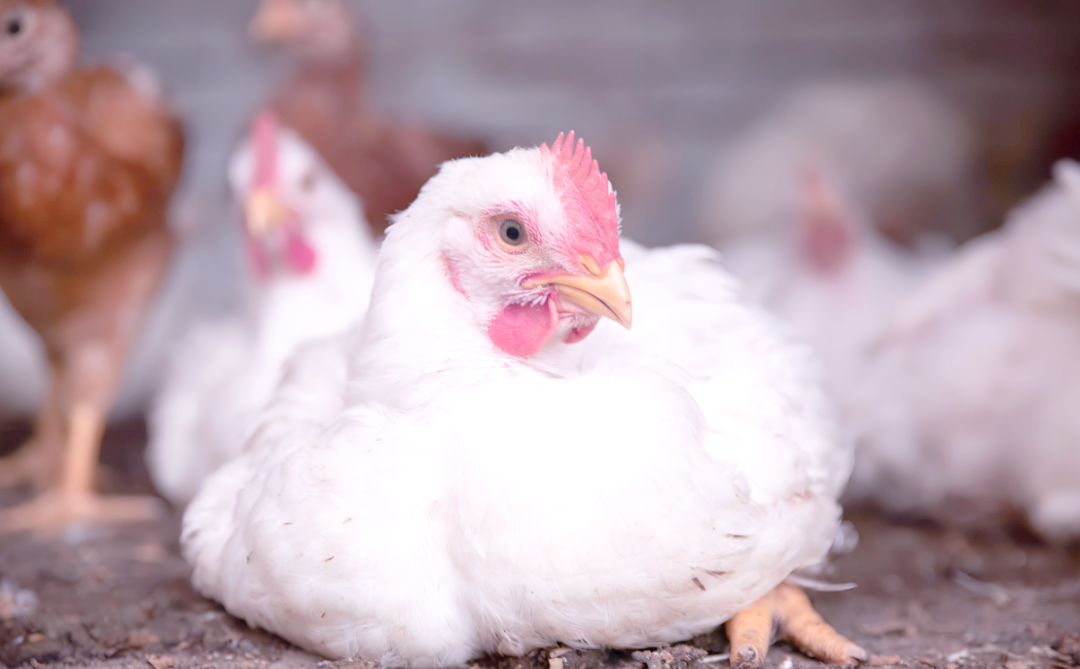------News Center
Fowl pox
(1)Clinical symptoms
Clinical types are divided into four types: skin type, mucosal type (diphtheria type), eye and nose type, and mixed type.
1. Skin type
It is characterized by the formation of a special pox on hairless parts of the body, such as the comb, wattles, corners of the mouth, eyelids, legs, cloaca, and the inside of the wings. The initial rash is a small gray skin-like rash that then rapidly increases in size to form gray or grayish-brown nodules as big as peas. The surface of the rash is uneven, the nodules are hard and dry, and contain yellow fat-like paste. Many nodules fuse together to form brown-black pox, which protrudes from the skin surface and falls off to form a smooth gray-white scar and heal. Severely ill chicks are listless, have a poor appetite, become emaciated, and even die; laying hens produce fewer or no eggs.
2. Mucosal type (diphtheria type)
It is common in chicks, and the general mortality rate is over 5%.
In the early stage, the symptoms are rhinitis, and small yellow-white nodules form in the oral cavity, pharynx, larynx, nasal cavity, esophageal mucosa, trachea and bronchi, which gradually increase in size and fuse with each other to form a yellow-white cheesy pseudomembrane (commonly known as diphtheria). The pseudomembrane is composed of necrotic mucosa and inflammatory exudate. In the later stage, the pseudomembrane blocks the oral cavity and pharynx, causing difficulty in breathing and swallowing, and death from starvation or suffocation.
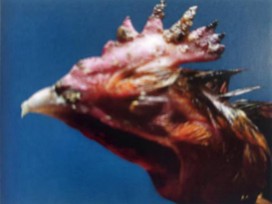
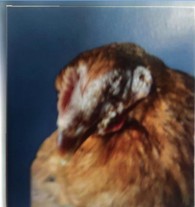
3. Eye and nose type
It often occurs with mucosal type, and is often mixed with Escherichia coli and chronic respiratory diseases. Watery liquid flows out of the eyes and nostrils of sick chickens, and then turns into light yellow thick pus; when the course of the disease is slightly longer, there is accumulation of inflammatory exudate in the orbit, swelling of the eyelids, and conjunctiva filled with purulent or fibrinous protein exudate. Some sick chickens have conjunctivitis, keratitis, blindness, etc.
4. Mixed type
When two or more types occur at the same time, the disease is generally serious and the mortality rate is high. Symptoms of different types above can occur.
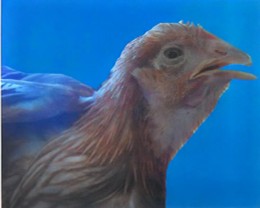
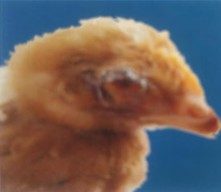
(2) Pathological changes
1. Skin type
The characteristic lesion is that the hair follicles in the local epidermis and its lower layer proliferate to form nodules. The nodules are hard and dry. When the nodules are cut, the inside surface bleeds and becomes moist. Scars are formed after the nodules fall off.
2. Mucosal type (diphtheria type)
Small yellow-white nodules form on the oral, pharyngeal, tracheal or esophageal mucosa, and then form yellow-white cheesy pseudomembranes. The pseudomembranes can be peeled off, and the surface of the trachea is light red and bleeding after peeling. Sometimes the hyperplasia of the laryngeal mucosa causes the laryngeal cleft to narrow and block the larynx. When the disease endangers the bronchi, it causes pneumonia.
3. Eye and nose type
The conjunctiva of the eye is inflamed and flushed. When the swollen infraorbital cavity is cut, there is accumulation of inflammatory exudate; when the swollen part of the eye is cut, yellow-white cheesy coagulation can be seen.
4. Mixed type
Two or more types of pathological changes occur.
(3)Symptomatic treatment measures
1. Skin-type fowl pox
Cleaning and disinfection: Wash the affected area with warm water or 0.1% potassium permanganate solution, gently peel off the scab, and apply iodine tincture, gentian violet or sulfur ointment to promote healing
Prevent secondary infection: Apply erythromycin ointment or mupirocin ointment to the affected area to prevent bacterial infection
Mucosal (diphtheria) fowl pox
2. Remove pseudomembrane:
Use tweezers to carefully peel off the yellow pseudomembrane in the mouth/throat to avoid suffocation, and then rinse with potassium permanganate solution.
Mucosal care: Apply iodine glycerin or cod liver oil to relieve ulcers and promote repair
3. Systemic supportive treatment
Supplement vitamins A and C to enhance resistance, and add electrolytes to drinking water to reduce stress.
If secondary bacterial infection occurs, oral antibiotics such as amoxicillin and enrofloxacin (need to follow veterinary guidance)
(4)Precautions
No specific drug:
Treatment is mainly to relieve symptoms, the course of the disease is about 2-4 weeks, and the mortality rate of severe mixed type can reach 50%
Early identification and early intervention: Skin rashes, oral pseudomembranes, and dyspnea are typical symptoms and require timely isolation and treatment

